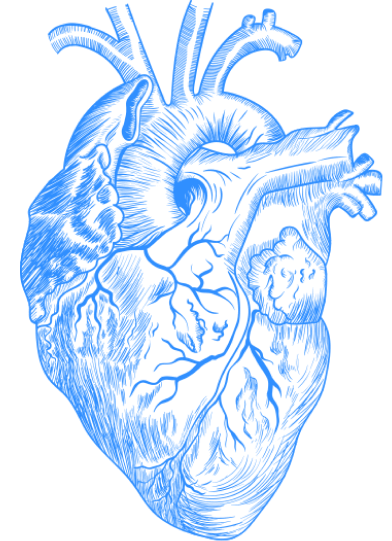
I remember reading Sir Arthur Conan Doyle’s Sherlock Holmes detective stories as a child. I tore through each page of each book, relishing Holmes’s crime-fighting abilities and dreaming that I could replicate them. I even would have settled for the opportunity to work alongside Holmes like his loyal ally Dr. Watson, sharing in adventures and assisting the great investigator. Today, when I return to stories like The Sign of the Four, I am just as enthralled and entertained as I was then.
 |
|||
| Sherlock Holmes sculpture by John Doubleday, at Meiringen, Switzerland, near the Reichenbach waterfalls, where Holmes faces his nemesis Professor Moriarty in “The Final Problem.” Image via Shutterstock |
Holmes’s power of observation is his most impressive trait. He observes his surroundings more carefully than any of the professionals at Scotland Yard. He notices the way a man dresses, the way someone walks, different types of ash from pipes, and unique types of handwriting. Holmes succeeds as a detective using this unmatched faculty. As a budding physician, I am beginning to realize how relevant this ability is to the practice of medicine.
Indeed, Conan Doyle based Holmes off of his teacher in medical school: Dr. Joseph Bell, a professor of medicine at the University of Edinburgh. The author wrote to Dr. Bell in 1892: “It is most certainly to you that I owe Sherlock Holmes.” Though Conan Doyle never pursued medicine as a career, he assimilated much from his mentor. He describes his encounter with Dr. Bell in the book Memories and Adventures (1924):
For some reason which I have never understood he singled me out from the drove of students who frequented his wards and made me his outpatient clerk, which meant that I had to array his outpatients, make simple notes of their cases, and then show them in, one by one, to the large room in which Bell sat in state surrounded by his dressers and students. Then I had ample chance of studying his methods and of noticing that he often learned more of the patient by a few quick glances than I had done by my questions.
From Dr. Bell’s perspective, teaching students to use their eyes as well as their textbook knowledge was of paramount importance. Deflecting his former student’s praise, Dr. Bell explained in the Strand Magazine,
Dr. Conan Doyle has, by his imaginative genius, made a great deal out of very little, and his warm remembrance of one of his old teachers has coloured the picture. In teaching the treatment of disease and accident, all careful teachers have first to show the student how to recognize accurately the case. The recognition depends in great measure on the accurate and rapid appreciation of small points in which the diseased differs from the healthy state. In fact, the student must be taught to observe. To interest him in this kind of work we teachers find it useful to show the student how much a trained use of the observation can discover in ordinary matters such as the previous history, nationality, and occupation of a patient.
An example of Bell’s acumen tells us much about his prowess as a physician. Conan Doyle recounts the following conversation between Bell and a patient:
“Well, my man, you’ve served in the army.” “Aye, sir.” “Not long discharged?” “No, sir.” “A Highland regiment?” “Aye, sir.” “A non-com. officer?” “Aye, sir.” “Stationed at Barbados?” “Aye, sir.” “You see, gentlemen,” he would explain, “the man was a respectful man but did not remove his hat. They do not in the army, but he would have learned civilian ways had he been long discharged. He has an air of authority and he is obviously Scottish. As to Barbados, his complaint is elephantiasis, which is West Indian and not British.” To his audience of Watsons it all seemed very miraculous until it was explained, and then it became simple enough. It is no wonder that after the study of such a character I used and amplified his methods when in later life I tried to build up a scientific detective who solved cases on his own merits and not through the folly of the criminal.
Dr. Bell
further explained his methods in the Strand Magazine:
And the whole trick is much easier than it appears at first. For instance, physiognomy helps you to nationality, accent to district, and, to an educated ear, almost to county. Nearly every handicraft writes its sign manual on the hands. The scars of the miner differ from those of the quarryman. The carpenter’s callosities are not those of the mason. The shoemaker and the tailor are quite different.
It is tempting to think of Dr. Bell’s and Sherlock Holmes’s skill as the stuff of history. How many of us handcraft shoes these days? Also, these methods seem useless in the age of labs and imaging. We can track liver enzymes, look at cells from biopsies, get blood counts, and perform full body scans showing us much of what we need to see. Nevertheless, to rely on labs and imaging and other recent techniques to dismiss Dr. Bell’s method would be a mistake.
During an outpatient clinic week, one woman came in complaining of a “racing heartbeat.” The resident and I interviewed her together and asked a series of questions that most physicians ask a patient during a visit: When did this start? What does it feel like? Do you have any shortness of breath with it? Does it happen while you’re active or at rest? Does anything make it better or worse? Is there any pain associated with it? Is it constant or does it wax and wane? Do you have any other symptoms with it? Have you had any sick contacts recently?
From what we gathered, she, her two children, and her husband all had pertussis, or whooping cough (That a whole family has a disease for which we have a vaccine is distressing — see my post on vaccines here.) She had been coughing hard for months and was taking Robitussin to mitigate her symptoms. But at random times during the day, she felt like her heart was racing. She denied an association between the cough and any activity and claimed that she wasn’t taking any medicine other than Robitussin. None of us could figure out why she was having these symptoms. We ordered an Electrocardiogram (EKG), which demonstrated a fast heart rate but no abnormal rhythms.
As we walked out of the room we noticed an inhaler of albuterol hanging out of the patient’s purse. An inhaler is used by asthmatics to control wheezing. It is one of the first-line treatments for asthma and it allows patients to breathe in medication, thus making sure the medicine gets into the lungs. We asked if she was using it. She admitted to taking it seven to eight times per day. Her son had asthma and she used his inhaler to help with her cough.
Albuterol acts on beta-2 receptors in the lungs. These receptors, when stimulated, cause relaxation of the muscles that control the airways. In asthmatics, the airways clamp down and cause shortness of breath and wheezing. Albuterol reverses this effect. Unfortunately, there is minor cross-reactivity between beta-2 receptors and beta-1 receptors. Beta-1 receptors can increase the heart rate and cause cardiac arrhythmias. This particular patient was using the inhaler so often that she was getting a lot of cross-reactivity and consequently felt like her heart was going to jump out of her chest.
We explained this to her and told her to stop using the inhaler. She left without any prescriptions — an unusual outcome for a clinic visit. In this case, even though we had taken a thorough history by asking the patient careful questions and getting an EKG, we were flummoxed. Only by observing not just the patient but her belongings were we able to figure out what was going on.
A doctor’s success depends both on the ability to elicit information from the patient and to watch carefully for signs of unusual behavior or circumstances. Observation is and remains, as it was for Dr. Joseph Bell, integral to the accurate recognition of a patient’s illness. It requires levels of attentiveness that only the expert observer could describe as “much easier than it appears at first”; while being foundational, it is by no means elementary.

